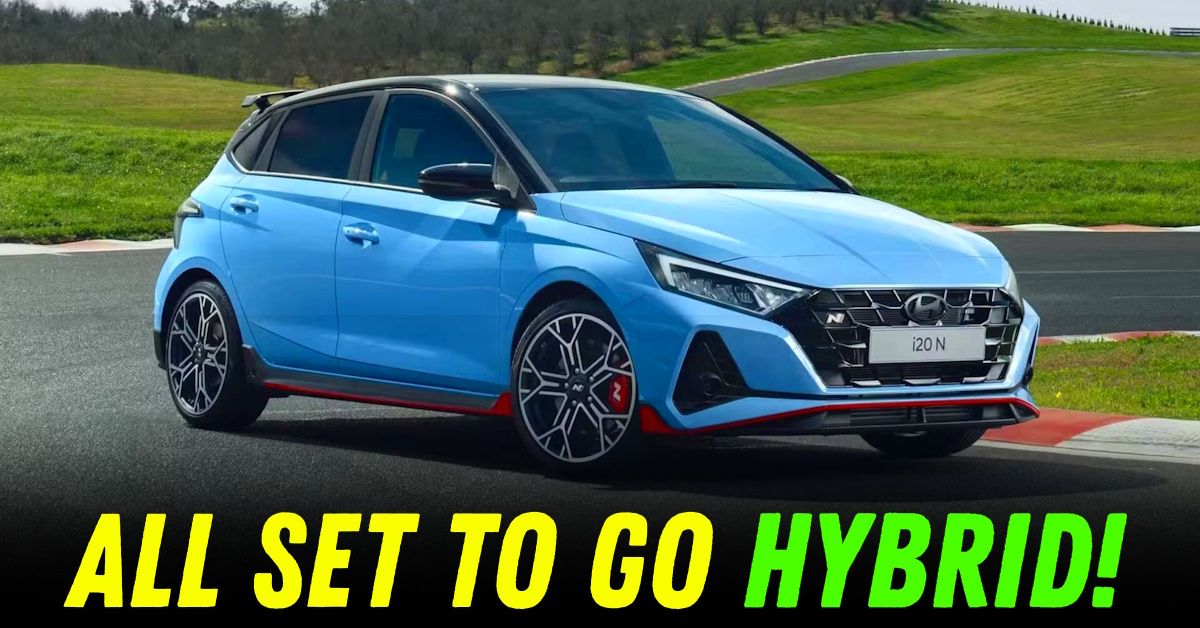Hyundai i20 N Hybrid In The World


Hyundai has confirmed the i20 N is returning, but this time with a hybrid twist. The i20 N Hybrid will replace the pure petrol hot hatch in Europe and may also find its way into other markets in an electrified form. This move shows how even enthusiast-focused cars are evolving in a world increasingly shaped by emissions regulations and fuel efficiency concerns.
While this update is currently Euro-specific, it holds significance for car lovers everywhere, especially in countries where performance hatchbacks are a niche yet passionate segment.
The current i20 N is known for its 1.6-litre turbo petrol engine pushing out 204 bhp, paired with a manual gearbox. But Hyundai has now announced that this powertrain will be discontinued due to stricter emissions norms in Europe. Instead, the i20 N nameplate will live on with a hybrid setup, though exact specifications are yet to be shared.
This hybrid model is expected to feature a turbo-petrol engine paired with an electric motor and a battery pack to offer both performance and fuel savings. The dual-clutch transmission is likely to remain, ensuring the car’s engaging drive stays intact.
The global shift towards electrification has hit performance cars hard. Many manufacturers have had to either abandon their hot hatches or compromise with toned-down engines. Hyundai choosing to electrify the i20 N rather than kill it off shows a commitment to preserving driving fun, even if it comes with some changes.
From a practical lens, this also future-proofs the i20 N, keeping it compliant with tightening European rules. For enthusiasts, it may offer a new way to enjoy spirited driving with fewer fuel stops and lower emissions.
In markets where hybrids are just gaining popularity, like Southeast Asia and parts of Latin America, this kind of car could play a dual role: giving performance enthusiasts something exciting, while easing them into electrification.
Although Hyundai hasn’t confirmed plans for an i20 N Hybrid outside Europe, the platform and drivetrain could be adapted for global markets. In places where fuel costs are rising and emissions norms are catching up, a fun-to-drive hybrid hatchback could make more sense than an all-out petrol burner.
India did get the i20 N Line, a sporty trim with cosmetic updates and a tuned exhaust, but not the full-blown i20 N. A hybrid N version would likely be too expensive to assemble locally in the short term. Still, if Hyundai sets up more flexible EV/hybrid production lines under its larger electrification roadmap, a car like the i20 N Hybrid could become a halo product.
There’s a small but growing community of driving enthusiasts in the country who would welcome such a machine, especially if priced under ₹20 lakh. The N brand itself is gaining traction, and a hybrid version could elevate its appeal further.
In the end, the i20 N Hybrid’s confirmation shows that hot hatches can still thrive. They may not be loud, raw petrol-powered beasts anymore, but they can still be quick, fun, and efficient. Hyundai is betting that the driving spirit can live on even with batteries in the mix.
And if this gamble works in Europe, don’t be surprised if other markets see hybrid performance hatchbacks becoming the new norm. The future of fun is quieter, cleaner, and smarter but still worth looking forward to.